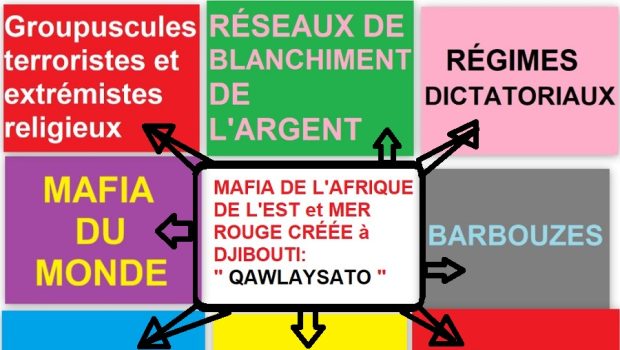
Afrique de l’Est/Mer Rouge : L’histoire des organisations mafieuses dans cette région du monde.
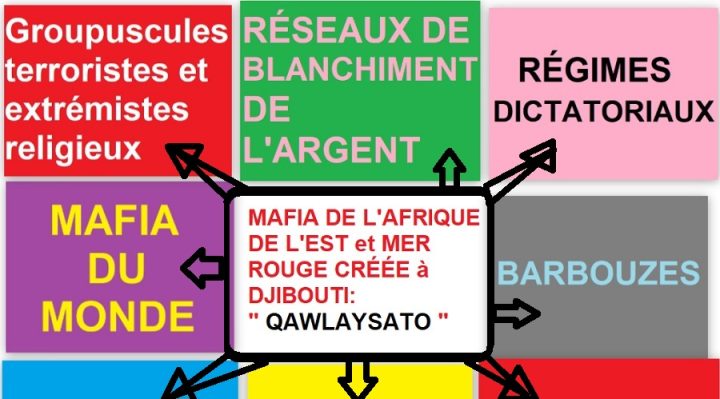
Quelques organisations criminelles et mafias dans le monde.
En Europe.
En Europe, les organisations mafieuses les plus connues et le plus visibles dans les médias sont originaires de trois pays: l’Italie, la Turquie et la Russie.
Le Cosa nostra, le Ndrangheta et la Camorra en Italie sont les plus stars du monde dans ce domaine.
La mafia russe ou russophone qui est un conglomérat d’organisations criminelles est plus connue sous l’appellation « organisations criminelles transnationales (OCT) russes ». Monsieur Semion Yudkovich Moguilevitch, un universitaire ukrainien diplômé en économie en 1968, est connu comme le parrain des parrains de ces organisations mafieuses russophones.
La mafia turque, comme la mafia russophone, un regroupement des petites organisations en grande partie activent dans leur pays.
En Asie.
En Asie, les organisations criminelles de deux pays qui sont les plus connues : Les triades chinoises et le Yakusa au Japon.
Les triades chinoises nées vers le 17e siècle étaient à la base des mouvements de contestation opposés à la dynastie mandchoue des Qing, mais depuis le 19e siècle elles ont une organisation pyramidale et un parrain connu sous l’appellation de « Tak khunn » qui signifie « tête de dragon ».
Bien que leur origine est sujette à controverse, beaucoup disent que les Yakuzas sont apparus vers le 19e siècle avec les essors des jeux de paris clandestins.
Monsieur Satoru Nomura est le parrain des parrains des quatre grandes organisations du crime qui composent le Yakuza.
En Amérique du Sud :
En Amérique latine c’est les organisations criminelles activent dans le trafiques des drogues qui sont les plus connues, tels que le Cartel de Cali en Colombie et la Mara Salvatrucha salvadorienne créée en Californie.
Ces organisations mafieuses colombiennes ou salvadoriennes de narcotrafiquants sont basées autour des villes ou régions dont elles portent leurs noms.
En Amérique du Nord :
Il existe plusieurs organisations mafieuses aux USA et au Canada, mais ces organisations sont en grande partie des ramifications de la mafia italienne, turque, russophone, Yakuza, triades chinoises, des narcotrafiquants de l’Amérique latine et, etc.
Au Mexique c’est le Cartel de Sinaloa et le Cartel Los Zetas, des narcotrafiquants, qui les plus connus.
En Afrique.
En Afrique il existe beaucoup des petites organisations criminelles, comme dans en Europe — en Asie et en Amérique, mais deux organisations ont la forme la plus accomplie et la plus aboutie comme la mafia italienne.
Au Nigeria.
C’est les gangsters des grandes villes de Nigeria qui se sont structurées avec le développement des trafics de l’héroïne et d’être humain dès le 80. Cette mafia de l’Afrique de l’Ouest s’est lié des relations avec celles de l’Italie et a réussi à développer ses branches en Europe.
En Afrique de l’Est et la Mer Rouge.
La mafia de cette région est connue sous l’appellation de « Qawlaysato » qui est un mot de la langue somalie qui signifie « bandit de grands chemins ».
Au 19e siècle avec l’empire d’Ottoman présent à la Mer-Rouge, plus particulièrement les régions de la Mecque, actuel Arabie Saoudite, et le Yémen, le trafic des armes commencent à se développer dans l’axe Yémen/Corne de l’Afrique. Les premières armes venaient d’Aden et rentraient l’Afrique de l’Est via les villes de Zeila, de Tadjourah, d’Obock et d’Assab.
Juste avant la 1re guerre mondiale et jusqu’à la fin des années 50, c’est quelques Occidentaux tels que Henry de Monfreid et des Corses, qui contrôlent les trafics d’armes dans la région.
Après la Deuxième Guerre mondiale, des Corses développent à Djibouti des night-clubs et des restaurants de vente d’alcool destiné principalement des occidentaux présentent à Djibouti. Comme Djibouti est un pays à 99 %, les night-clubs corses ont des difficultés à recruter des femmes prostituées ou serveuses dans leurs commerces.
Pour recruter des femmes prostituées dans les régions non-musulmanes de l’Éthiopie, les Corses se lient des relations avec des familiers djibouto/éthiopiens, de l’ethnie Issa/Somalie, qui pratiquaient la contrebande des marchandises (alcool et cigarettes), tels que les familles Gouled, Guelleh et Aïnache.
Les familles précitées recrutent des femmes dans les régions Amhara et Oromo de l’Éthiopie pour alimenter les marchés de la prostitution en Afrique de l’Est et au Yémen.
Vers les années 60/70, ces familles s’organisent comme la mafia italienne et c’est une femme dénommée « Amina Guelleh » qui sera la marraine ou la première boss connue de cette mafia naissante de l’Afrique de l’Est et Mer Rouge. Pour vivre en symbiose avec la société djiboutienne, cette marraine finance des activités culturelles (création de troupes de musique), sportives et des politiciens locaux.
Leurs proximités avec les Corses et le milieu Françafrique en général, les familles qui composent cette mafia arrivent à prendre le pouvoir en république de Djibouti dès l’indépendance, le 27 juin 1977.
Depuis cette date, la contiguïté et la mitoyenneté entre cette société criminelle « Qawlaysato » et les institutions de l’état djiboutienne s’accélèrent au point qu’aujourd’hui on qualifie le pouvoir djiboutien de « régime mafieux ».
Cette mafia « Qawlaysato », née à Djibouti, réalise dès les années 80 des branches en Somalie, l’Éthiopie et le Yémen.
En raison du secteur bancaire très développé et libéral ainsi les activités portuaires intenses, cette mafia monopolise les trafics d’armes et d’être humains ainsi que les blanchiments dans la région.
Quelques exemples de ses réalisations :
- D’après Fonti, le parrain repenti de la Ndrangheta, les années, 86/87, la mafia Qawlaysato et la Ndrangheta italienne passe un accord pour faire transiter aux ports de Djibouti les déchets toxiques qui seront enterrés en Somalie et en Éthiopie. D’ailleurs, la marine française avait empêché à accoster à Djibouti, en janvier 1987, le navire-Lynx qui transport des déchets toxiques destinés à la Somalie. Lynx a été loué au nom d’une étrange société djiboutienne dénommée « International Consulting ».
- Trafics d’armes vers la Somalie pendant la guerre civile développée avec des organisations de l’Europe de l’Est et le directeur général de la société de pêche de l’état somalien, monsieur Munye Said Oma.
- Trafics d’armes à destination des Hutis du Yémen et des rebelles en Éthiopie et Soudan du Sud.
- Le blanchiment d’argent de certaines dictatures, tels que Zine el-Abidine Ben Ali de Tunisie, des trafiquants et des organisations terroristes, tels qu’Al-shabab de la Somalie.
- Contrebandes des produits de premiers nécessités (tel que les médicaments) vers l’Iran.
- Etc.
Les investissements et exportations du savoir-faire de la mafia Qawlaysato vers les restes du continent.
Dès le début des années 2000, la mafia Qawlaysato commence à investir à Kigali. C’est grâce à la vigilance de son excellence Paul Kagame que leur projet tentaculaire échoue au Rwanda.
Depuis 5 ans, la mafia Qawlaysato jette son dévolu sur la Côte d’Ivoire. Alors qu’il n’y a aucun échange commercial ni éducatif entre les deux pays, la République de Djibouti ouvre une ambassade à Abidjan en 2022.
Des informations non confirmées racontent que des sociétés Offshores appartenant à l’actuel président de Djibouti tentent d’investir dans l’exploitation du pétrole en Cote D’ivoire.
Hassan Cher
The English translation of the post:
East Africa/Red Sea: The history of mafia organizations in this region of the world.
Some criminal organizations and mafias in the world.
In Europe.
In Europe, the most famous mafia organizations and the most visible in the media are from three country: Italy, Turkey and Russia.
The Cosa nostra, the ‘Ndrangheta and the Camorra in Italy are the world’s most famous in this field.
The Russian Mafia, which is a conglomerate of criminal organizations, is better known as the Russian Transnational Criminal Organizations (TCO). Mr. Semion Yudkovich Moguilevich, a Ukrainian academic who graduated in economics in 1968, is known as the godfather of the sponsors of these Russian-speaking mafia organizations.
The Turkish mafia, like the Russian-speaking mafia, is a grouping of small organizations largely active in their country.
In Asia.
In Asia, the criminal organizations of two countries are the best known: the Chinese triads and the Yakuza in Japan.
The Chinese triads originated around the 17th century as protest movements against the Manchu Qing dynasty, but since the 19th century they have had a pyramidal organization and a sponsor known as « Tak khunn », which means « dragon head ».
Although their origins are controversial, many say that the Yakuza emerged around the 19th century with the rise of underground gambling.
Mr. Satoru Nomura is the godfather of the godfathers of the four major crime organizations that make up the Yakuza.
In South America:
In Latin America, the criminal organizations active in the drug trade are the best known, such as the Cali Cartel in Colombia and the Salvadoran Mara Salvatrucha created in California.
These Colombian or Salvadoran mafia organizations of drug traffickers are based around the cities or regions from which they take their names.
In North America:
There are several mafia organizations in the US and Canada, but these organizations are largely offshoots of the Italian, Turkish, Russian-speaking mafia, Yakuza, Chinese triads, Latin American drug traffickers and, etc.
In Mexico, the Sinaloa Cartel and the Los Zetas Cartel, drug traffickers, are the best known.
In Africa.
In Africa there are many small criminal organizations, as in Europe – in Asia and America, but two organizations have the most accomplished and successful form as the Italian mafia.
In Nigeria.
It is the gangsters of the big cities of Nigeria that have been structured with the development of heroin and human trafficking since the 80s. This West African mafia has established relations with the Italian mafia and has managed to develop its branches in Europe.
In East Africa and the Red Sea.
The mafia in this region is known as « Qawlaysato » which is a word in the Somali language that means « highwayman ».
In the 19th century with the Ottoman Empire present in the Red Sea, especially the regions of Mecca, now Saudi Arabia, and Yemen, arms trafficking began to develop in the Yemen/Corn of Africa axis. The first weapons came from Aden and returned to East Africa via the cities of Zeila, Tadjourah, Obock and Assab.
Just before World War I and until the end of the 1950s, a few Westerners such as Henry de Monfreid and Corsicans controlled the arms trade in the region.
After the Second World War, Corsicans developed nightclubs and restaurants in Djibouti selling alcohol mainly to Westerners in Djibouti. As Djibouti is a 99% Muslim country, Corsican nightclubs have difficulty recruiting female prostitutes or waitresses into their businesses.
To recruit female prostitutes from non-Muslim areas of Ethiopia, Corsicans connect with Djiboutian/Ethiopian relatives of the Issa/Somali ethnic group who used to smuggle goods (alcohol and cigarettes), such as the Gouled, Guelleh, and Aïnache families.
The aforementioned families recruited women from the Amhara and Oromo regions of Ethiopia to supply the prostitution markets in East Africa and Yemen.
Around the 1960s and 1970s, these families organized themselves like the Italian mafia and it was a woman named « Amina Guelleh » who became the godmother or the first known boss of this nascent East African and Red Sea mafia. In order to live in symbiosis with Djiboutian society, this godmother finances cultural activities (creation of music groups), sports and local politicians.
Their closeness to the Corsicans and the Françafrique milieu in general, the families that make up this mafia managed to take power in the Republic of Djibouti as soon as it gained independence on 27 June 1977.
Since this date, the contiguity and the mitoyenneté between this criminal society « Qawlaysato » and the institutions of the Djiboutian state accelerate to the point that today we qualify the Djiboutian power of « mafia regime ».
This « Qawlaysato » mafia, born in Djibouti, has been operating since the 1980s in Somalia, Ethiopia and Yemen.
Due to the highly developed and liberal banking sector as well as the intense port activities, this mafia monopolizes arms and human trafficking as well as money laundering in the region.
Some examples of its achievements:
– According to Fonti, the repentant godfather of the ‘Ndrangheta, the years, 86/87, the mafia Qawlaysato and the Italian ‘Ndrangheta made an agreement to transit to the ports of Djibouti the toxic waste that will be buried in Somalia and Ethiopia. In January 1987, the French navy prevented the ship Lynx, which was carrying toxic waste destined for Somalia, from docking in Djibouti. Lynx was rented in the name of a strange Djiboutian company called « International Consulting ».
– Arms trafficking to Somalia during the civil war developed with Eastern European organizations and the general manager of the Somali state fishing company, Mr. Munye Said Oma.
– Arms trafficking to the Hutis in Yemen and to rebels in Ethiopia and South Sudan.
– Money laundering of certain dictatorships, such as Zine el-Abidine Ben Ali of Tunisia, traffickers and terrorist organizations, such as Al-shabab of Somalia.
– Smuggling of basic necessities (such as medicines) to Iran.
– Etc.
Investments and exports of the Qawlaysato mafia’s know-how to the rest of the continent.
From the beginning of the 2000s, the Qawlaysato mafia began to invest in Kigali. It is thanks to the vigilance of his Excellency Paul Kagame that their sprawling project failed in Rwanda.
For 5 years, the Qawlaysato mafia has been setting its sights on Côte d’Ivoire. While there are no commercial or educational exchanges between the two countries, the Republic of Djibouti opened an embassy in Abidjan in 2022.
There are unconfirmed reports that offshore companies owned by the current president of Djibouti are trying to invest in oil exploitation in Cote D’Ivoire.
Hassan Cher
Liens / Links :
- https://www.hch24.com/actualites/10/2019/djibouti-lassassinat-du-juge-bernard-borrel-gouled-le-donneur-dordre-et-guelleh-lexecutant%E2%80%89/
- https://www.hch24.com/actualites/02/2015/djibouti-un-paradis-sur-pour-le-blanchiment-international-de-largent-de-la-drogue-et-de-la-mafia/
Share
-
Pingback: 05/10/20222 (Brève 2105) HCH 24 : L’histoire des organisations mafieuses dans le monde et en Afrique de l'est – ARDHD
-
Pingback: Lincoln Georgis
-
Pingback: Leandro Farland
-
Pingback: Campus facilities
-
Pingback: افضل جامعه فى مصر
-
Pingback: Sustainable development in Marketing
-
Pingback: Interdisciplinary nature
-
Pingback: Medication safety
-
Pingback: منهج الهندسة
-
Pingback: التأثير العالمي
-
Pingback: fue
-
Pingback: دراسة ادارة الاعمال بجامعة المستقبل
-
Pingback: جراحة الأسنان التعليم
-
Pingback: ما هو عمل خريج ادارة الاعمال
-
Pingback: متطلبات القبول لجامعة المستقبل


 Previous Article
Previous Article Next Article
Next Article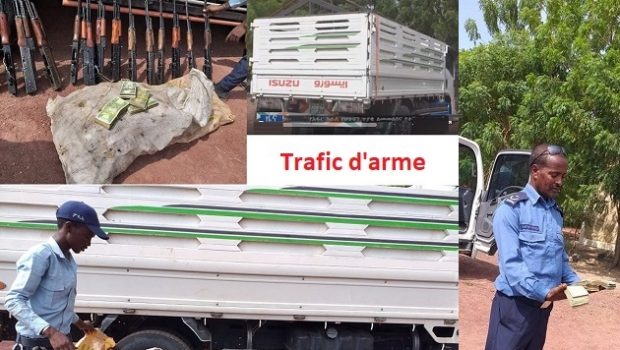 Éthiopie / Djibouti : Un camion bourré d’arme en provenance de Djibouti intercepté dans la région Afar de l’Éthiopie.
Éthiopie / Djibouti : Un camion bourré d’arme en provenance de Djibouti intercepté dans la région Afar de l’Éthiopie. 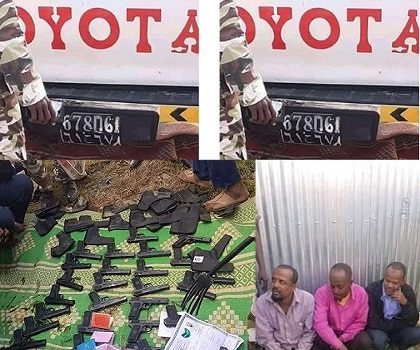 Djibouti/Éthiopie : Guelleh accuse indirectement l’Égypte et l’Érythrée d’être responsable du trafic d’armes à destination de l’Éthiopie.
Djibouti/Éthiopie : Guelleh accuse indirectement l’Égypte et l’Érythrée d’être responsable du trafic d’armes à destination de l’Éthiopie. 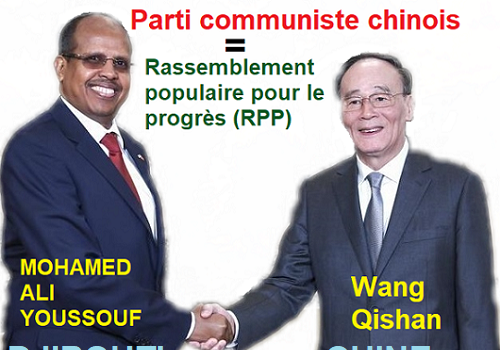 Chine / Djibouti : Fusion ou parrainage entre le Parti communiste chinois et le RPP de Gouled/Guelleh ?
Chine / Djibouti : Fusion ou parrainage entre le Parti communiste chinois et le RPP de Gouled/Guelleh ? 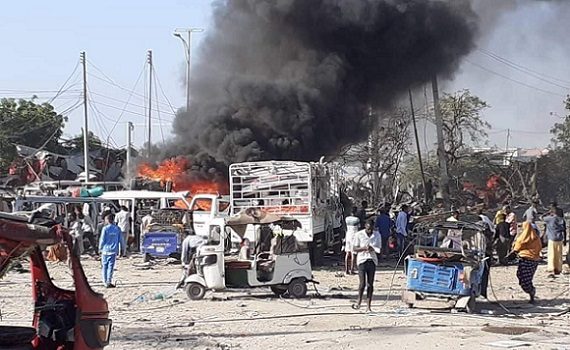 Somali : plus de 115 morts et 200 blessés à Mogadiscio suite l’attentat terroriste d’Al-shabab de ce samedi matin.
Somali : plus de 115 morts et 200 blessés à Mogadiscio suite l’attentat terroriste d’Al-shabab de ce samedi matin.  Djibouti / Somaliland: Communiqué de PADD sur la déstabilisation de la Somaliland par Guelleh.
Djibouti / Somaliland: Communiqué de PADD sur la déstabilisation de la Somaliland par Guelleh.  Éthiopie : Des affrontements à caractères ethniques dans les universités des régions Amhara et oromo.
Éthiopie : Des affrontements à caractères ethniques dans les universités des régions Amhara et oromo.  Somaliland : Le Taïwan appui la reconnaissance de la Somaliland sur la base de la Convention de Montevideo de 1933.
Somaliland : Le Taïwan appui la reconnaissance de la Somaliland sur la base de la Convention de Montevideo de 1933. 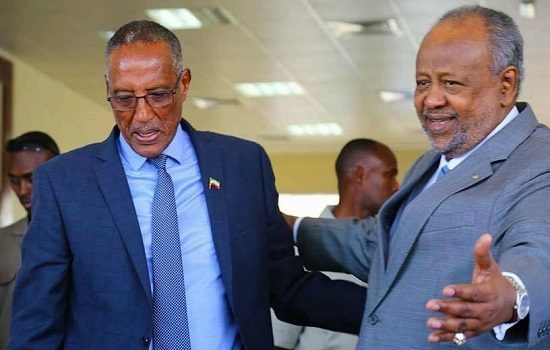 Djibouti/Somaliland: Ismaël OMAR GUELLEH est officiellement opposé à la reconnaissance de la Somaliland d’après…
Djibouti/Somaliland: Ismaël OMAR GUELLEH est officiellement opposé à la reconnaissance de la Somaliland d’après…